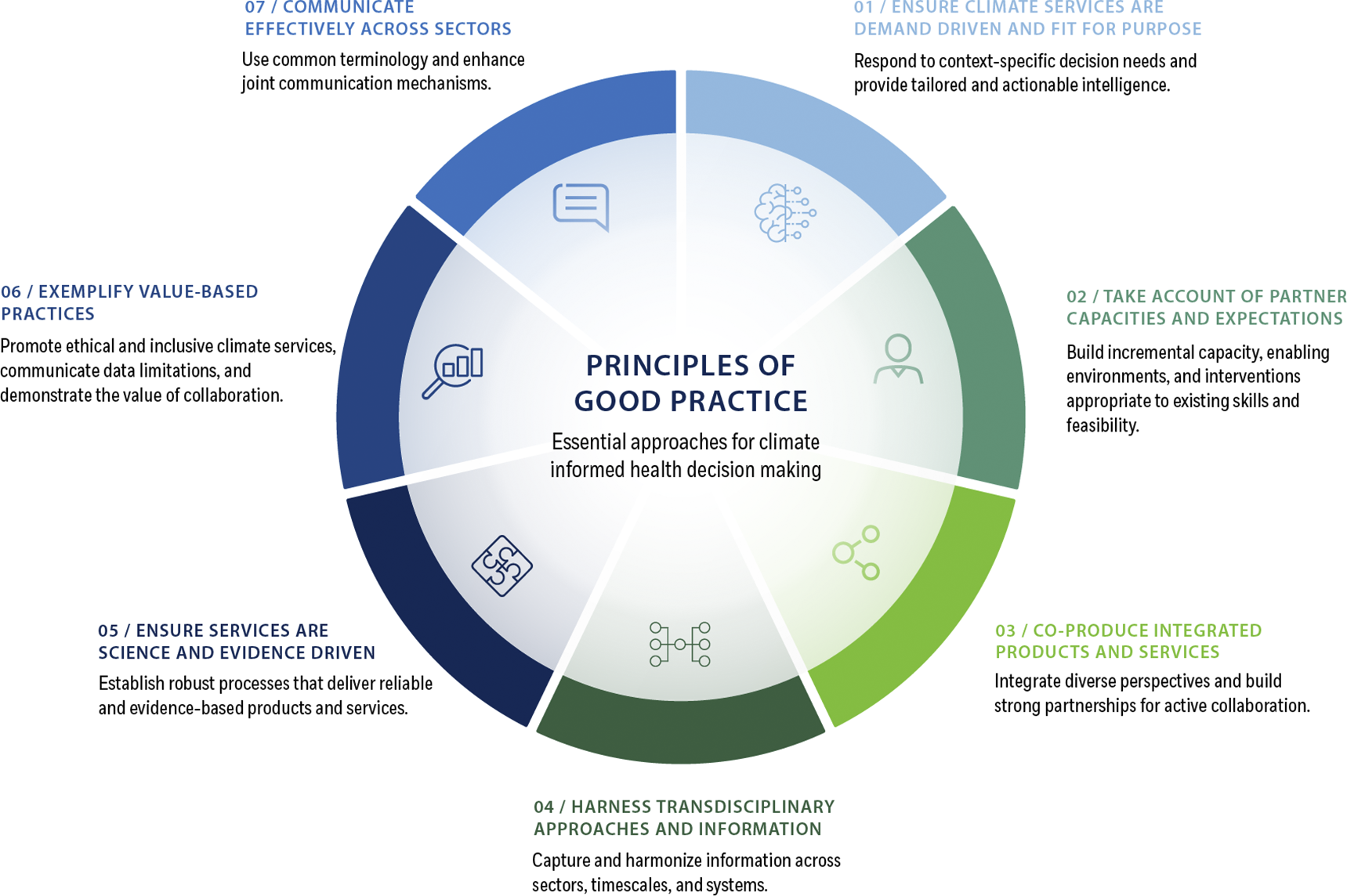Governance for climate service adoption
Effective governance is critical to successful climate adaptation and risk management efforts. It involves institutions, policies, processes and partnerships that guide and coordinate actions at various levels, from local to global. In the context of climate services, good governance should ensure the provision of climate information to support decision-making across different sectors, enabling coordinated and informed actions to enhance adaptation and resilience.
Although often conceived as products, climate services imply processes and relations among actors. Their delivery often does not follow supply-driven delivery from providers to users (Tarchiani and Bacci, 2024) but more complex co-production cycles. From a governance perspective, two aspects are critical:
1. the coordination of different stakeholders during the co-production process
2. the institutionalization of processes and the ownership of tools and results by local public authorities.
Co-producing climate services include multiple actors, such as meteorological and hydrological services, research institutions, private sectors, international bodies and nongovernmental organizations. Ensuring the involvement of all necessary stakeholders and align their contribution is important to provide accurate and relevant services to end-users. This might require mechanisms for structured dialogue (such as workshops), integrating new users’ feedback and knowledge, as well as assigning clear roles, responsibilities and resources. Cities and local authorities should not only play the role of end-users but should be able to coordinate, interact, cooperate and negotiate with other stakeholders.
Furthermore, cities often struggle to institutionalize climate services development processes and take ownership of tools and results. The most common barriers include limited financial and human resources, data availability and accessibility, as well as fragmentation due to the multiplicity of actors involved. These barriers hinder the climate services development process and make the integration into decision-making and sectoral policies more difficult. Especially the long-term adoption of tools by city officials and the integration of climate services in ongoing processes remain difficult. The creation of coordinated institutional frameworks, the collaboration with key city departments and city officials, as well as the engagement of stakeholders and end-users are therefore critical for the successful implementation of climate services. Additional capacity building activities should enhance cities and users’ ability to interpret and apply climate information.
Governance barriers
Hover over each flip card to learn more about governance challenges.
Limited financial and human resources
Data availability and accessibility
Institutional fragmentation
Example: Good practices for the co-production of integrated climate, environmental and health services
In their research, Shumake-Guillemot et al. (2023) have identified good practices and approaches to the co-production of climate services to guide actors towards more successful partnerships and outcomes. These include:
1. Ensure climate services are demand driven and fit for purpose: the co-production process should
start and be driven by problems and needs identified by end-users.
2. Take account of partner capacities and expectations: setting clear expectation at the beginning of the process and build intersectoral collaboration.
3. Co-produce integrated products and services: ensure continuous dialogue and collaboration to support the co-production process.
4. Harness transdisciplinary approaches and information: include data and information from diverse sources, sectors and disciplines in the process.
5. Ensure services are science and evidence driven: the co-production process should be supported as
much as possible by evidence-base and robust scientific data.
6. Exemplify value-based practices: it includes promoting equitable and inclusive climate services, be
transparent about data approaches and limitations, and demonstrate the value of collaboration.
7. Communicate effectively across sectors: ensure sustained engagement among stakeholders and
effective communication platforms to facilitate mutual understanding and collaboration.

Example: Enhancing Climate Services for Infrastructure Investments
Watch this video about the use of climate services for infrastructure investments.
Summary
Reflection
- Why is governance critical for successful climate adaptation and risk management?
- What are the main governance barriers faced by cities in the development of climate services?
- What are good principles for the co-production of climate services?




